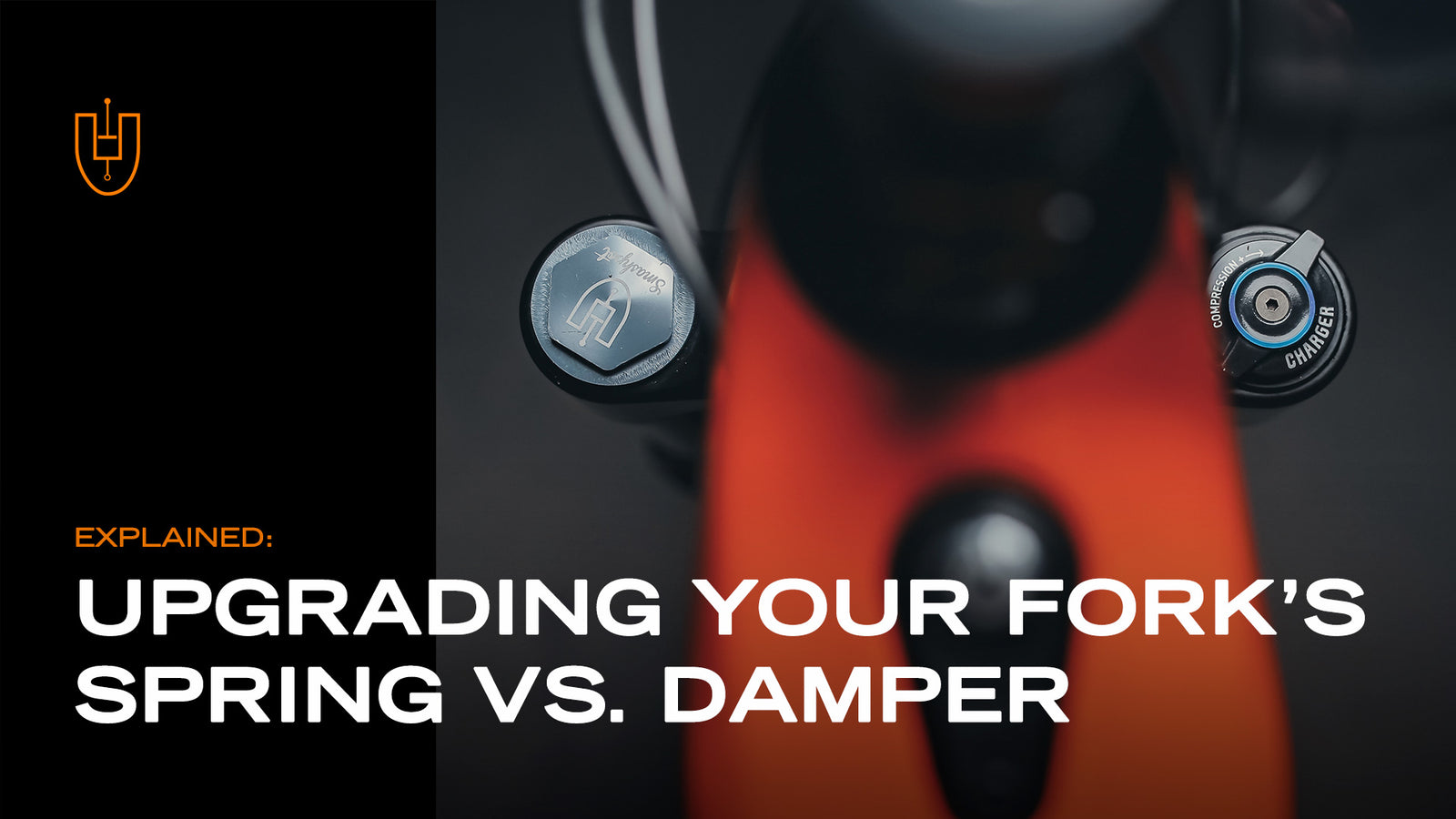Upgrading Your Fork’s Spring vs. Damper

Suspension basically comprises two separate systems working in parallel: a spring and a damper. On a mountain bike fork, you’ll have one leg containing the spring system, and the other leg containing the damper system. If this is news to you, you may want to consult our Suspension 101.
Most fork models within a given manufacturer’s lineup differ with what damper is offered, and this determines the level of adjustability available in terms of rebound & compression (high/low speed adjusters, lockouts/mode selectors etc). For example, you can buy a Fox 36 in Factory Series, Performance-Elite Series, Performance Series and Rhythm Series, or a Rockshox Lyrik in Select, Select+ and Ultimate models. In most cases, upgrading your damper will provide you with more adjustability - great for those who are patient and analytical tinkerers, willing to spend the time to dial in their suspension, but for many riders, the simpler, entry-level ‘set and forget’ options will suffice.

Springs, on the other hand, mostly stay basically the same across different fork models. Aside from much of the marketing fluff, most forks are air sprung these days due to their adjustability and weight-savings. While air springs have improved a lot over the years, if we were to evaluate springs only on performance, coil springs are more advantageous, containing fewer seals (meaning less friction), and improved sensitivity as a result.
If you are considering ‘upgrading’ parts or the entirety of your fork, it is also important to consider the reason for doing so. If your goal is a better performing fork, these are the things *we consider* to matter the most in terms of fork performance, in order of priority:
#1 - Friction
Friction massively affects small-bump sensitivity and is commonly a major cause of ‘harshness’ in a fork. Servicing your fork regularly is absolutely necessary to keep this to a minimum. When it comes to friction, coil sprung forks offer the ultimate small-bump sensitivity and plushness. Read more about it here.

#2 - Spring Curve
Getting the right spring characteristics in terms of spring rate / shape of curve is important to feeling supported. An ideal spring curve translates to a fork feeling supportive but not harsh, soft but not disappearing beneath you or bottoming out. Your choice of spring (air or coil), spring rate & travel go hand-in-hand and directly affect the shape of your spring curve, which then determines how your fork will behave. Read more about it here.

#3 - Rebound Damping
Rebound damping is more important than compression damping in terms of performance, as it hugely affects the feel and stability of the bike. All mid-to-high-end suspension on the market today will have this adjustment. It is important to ensure that your rebound damping is a) functioning properly and b) adequate to your needs within its range of adjustment. For most riders weighing between about 140lbs and 200lbs (65kg to 90kg), stock rebound damping usually has a generally adequate range of adjustment.
There are certainly nuances to rebound damping (such as the relationship between high and low speed damping, which determine the overall shape of the curve rather than the magnitude) that can improve the ride characteristics even at a similar “overall amount”, but most fork dampers have converged on fairly similar characteristics here.
#4 - Compression Damping
Compression damping typically matters more as riders improve their experience & skills, and as weight increases. Most stock dampers these days come with compression tunes suited for intermediate and/or lighter weight riders that do not demand a high level of support when compared to expert and/or heavier riders, for example.
Riders with more experience and skills are likely to ride at higher speeds, hit larger jumps & drops, and as speed and rider input increase, so do the forces applied to the wheel & fork, meaning more compression damping is required to counter those forces.
For lighter and/or more cruisey riders, often the air spring characteristic along with the friction within the fork provides sufficient resistance, and there isn’t a big need for any significant amount of compression damping. However, when the first two points (friction and spring curve) are not well optimized, many riders have been led to believe that their fork has too much hydraulic compression damping when the real culprit lies elsewhere.

As with rebound damping, there are nuances to compression damping characteristics that can make significant changes to the behaviour of the suspension, but these become less important as compression damping rates become lower overall - meaning that if you have everything set fully open (or the damper is valved to be very light in the first place, which most OEM units now are) and it generates extremely low forces at any speed, it won’t really matter much whether your damper curve is digressive or linear or progressive.
So when choosing to improve the performance of your fork, you should look into tuning/upgrading in that order. The reason we’ve focused on spring upgrades is because they make the biggest noticeable difference to suspension performance, in addressing friction and spring curve.
| Upgrading Fork Spring | Upgrading Fork Damper |
|
|

